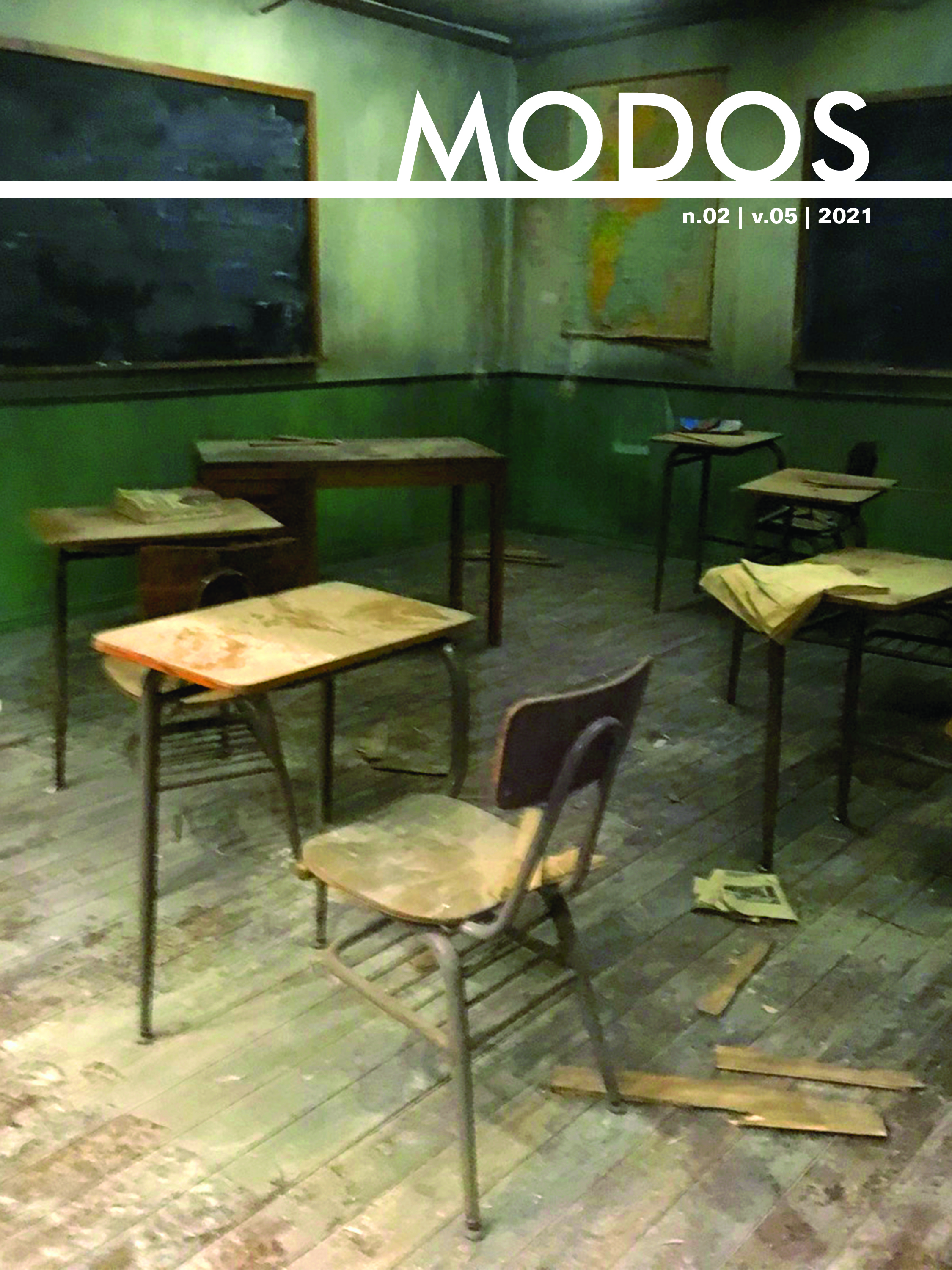Abstract
By studying catalogs and documents of the 1950s São Paulo Biennials, I identify a French artistic domination over the “Western” world, that emerges through the way in which the history of art of the 20th century was narrated and understood. In these discourses, the city of Paris appeared as an internationally shared symbol, serving as index for the history of modernism.The fifth Biennial (1959) is a critical event, in which France refused to participate with 20th century artworks. The institutional absence was not reflected in the texts of the exhibition, Paris being highly cited in the presentations of several other countries, such as, for example, the USA. It was in this half-absence of Paris, nevertheless, that a young production, passionate about blemishes and obvious gestures, dominated the event making it difficult for several observers to distinguish the beginning and end of different national delegations, leading this event to be dubbed as “the Biennial of Tachisme”. This homogeneity enabled peripheral regions to present, for the first time, their own art as no longer in deficit to that of the great nations.
References
AMARAL, A. Arte pra quê? A preocupação social na arte brasileira. 1930-1970. São Paulo: Studio Nobel, 2003 [1984].
ANDERSON, B. Comunidades Imaginadas. São Paulo: Companhia das Letras, 1994.
AVELAR, A. A Raiz Emocional: Arte brasileira na crítica de Lourival Gomes Machado. São Paulo: Alameda: 2014.
BELTING, H. O Fim da História da Arte. São Paulo: Cosac & Naify, 2006.
BOURDIEU, P. A dominação masculina. Rio de Janeiro: Bertrand Brasil, 1999.
CARTA de Arturo Profili - MAM-SP para Porter A. McCray – MoMa-NYC. 25/10/1958, arquivo Wanda Svevo, Fundação Bienal de São Paulo.
CARTA de Arturo Profili - MAM-SP para Jean Cassou – Musée d’art Moderne de Paris. 30/04/1959, arquivo Wanda Svevo, Fundação Bienal de São Paulo.
CARTA do Museu de Arte Moderna de São Paulo (MAM-SP) para Paulo Carneiro. 28/12/1958, arquivo Wanda Svevo, Fundação Bienal de São Paulo.
CARTA do Museu de Arte Moderna de São Paulo (MAM-SP) para Maria Martins. de 18/07/1959, arquivo Wanda Svevo, Fundação Bienal de São Paulo.
CARTA da embaixada brasileira em Paris para Francisco Matarazzo Sobrinho (MAM-SP), de 03/03/1959, arquivo Wanda Svevo, Fundação Bienal de São Paulo.
CATÁLOGO I Bienal de São Paulo. São Paulo: FBSP, 1951.
CATÁLOGO II Bienal de São Paulo. São Paulo: FBSP, 1953.
CATÁLOGO III Bienal de São Paulo. São Paulo: FBSP, 1955.
CATÁLOGO IV Bienal de São Paulo. São Paulo: FBSP, 1957.
CATÁLOGO V Bienal de São Paulo. São Paulo: FBSP, 1959.
CERCHIARO, M. Escultoras e Bienais: a construção do reconhecimento artístico no pós-guerra. Tese (Doutorado em Estética e História da Arte) – Programa de Pós-Graduação Interunidades da Universidade de São Paulo. São Paulo, 2020.
CLARK, T. J. A Pintura da Vida Moderna. São Paulo: Companhia das Letras, 2004.
COCKROFT, E. Abstract Expressionism, Weapon of the Cold War. In: FRASCINA, F. Pollock and after: the critical debate. London and New York: Routledge, 1985[1974].
COSTA, H. Museus Imaginários no Pós-Guerra: o Programa de Exposições Didáticas da Seção de Arte da Biblioteca Municipal de São Paulo (1945-1960). In: COLÓQUIO LABEX- BRASIL FRANÇA – Uma História da arte alternativa: outros objetos, outras histórias – da história colonial ao pós-modernismo. Anais... São Paulo: Museu de Arte Contemporânea da Universidade de São Paulo (MAC/USP), 2006, p.81-109.
COUTO, M. F. M. Por uma Vanguarda Nacional. Campinas: Editora UNICAMP, 2004.
DOSSIN, C. The Rise and Fall of American Art 1940 – 1980. Burlington: Ashgate Publishing. 2015.
DOSSIN, C. Beyond the Clichés of “Decadence” and the Myths of “Triumph”: Rewriting France in the Stories of Postwar Western Art. In: DOSSIN, C. (Ed.) France and the Visual Arts since 1945. New York: Bloomsbury Visual Arts, 2019.
FARIAS, A. Bienal 50 anos, 1951 – 2001. São Paulo: Fundação Bienal de São Paulo. 2002.
GUILBAUT, S. How New York Stole the Idea of Modern Art: Abstract Expressionism, Freedom, and the Cold War. Chicago: The University of Chicago Press, 1983.
JEAN, J. La Première Biennale de Paris : genèse, enjeux, bilan et réalité. Mémoire d’étude. 1ére année de 2ème cycle. Paris: École du Louvre, 2017.
MACHADO, L. G. A presença do novo. Estado de São Paulo, 05/10/1957.
MACHADO, L. G. Bienal: A significação do novo. O Estado de São Paulo, 17/10/1959.
MAGALHÃES, A. A Bienal de São Paulo, o debate artístico dos anos 1950 e a constituição do primeiro museu de arte moderna do Brasil, Museologia & Interdisciplinaridade, Brasília, v.4, n.7, p.112-129, out./nov. 2015.
PEDROSA, M. O Brasil está condenado ao moderno. Tribuna da Imprensa, 26-27/12/1953.
ROCCO, R. Danilo de Prete em Ação: a construção de um artista no sistema expositivo da Bienal de São Paulo. Tese (doutorado em Estética e História da Arte) – Programa de Pós-Graduação Interunidades, Universidade de São Paulo. São Paulo, 2018.
SILVA, M. L. Maria Leontina, Tarsila do Amaral, Prunella Clough e Germaine Richier: mulheres artistas e prêmios de aquisição na Primeira Bienal de São Paulo. Dissertação (mestrado em Estética e História da Arte) – Programa de Pós-Graduação Interunidades, Universidade de São Paulo. São Paulo. 2018.

This work is licensed under a Creative Commons Attribution-NonCommercial-ShareAlike 4.0 International License.
Copyright (c) 2021 Marcos Pedro Magalhães Rosa

